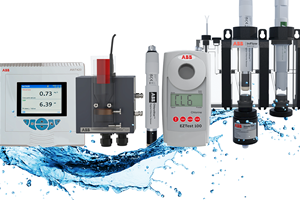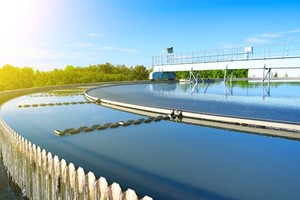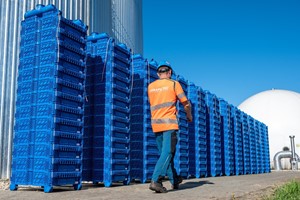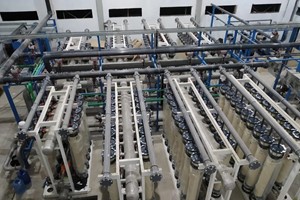Under one swooping term, the water industry has a long way to go before it can comfortably say that digital transformation has been embraced.
Various sectors of the water industry are divided in their technological progress, but regardless of which area you work in, it is highly likely that your day-to-day activities involve an element of technological reliance in some form.
Some sectors have made greater steps than others – environmental monitoring processes are fundamentally underpinned by technological innovation with devices like portable particle counters, while the wastewater industry utilizes a range of sampling technologies.
However, one area where every sector of the industry is united, is their slow progression to adapt to paperless technology. Although industry leaders may be quick to dismiss the notion that their reliance on outdated paper-based processes could be stopping their teams – and in turn, their company at large – from meeting their true potential, the impact of this in practice is rather significant.
From finance to construction, when you consider the daily responsibilities that workers throughout the water industry’s various sectors must contend with, few other industries have such a great reliance on the accuracy of its technicians. This dependence has the potential to lead to a multitude of problems – data errors, reduced productivity and increased costs, to name a few.
Digital data capture solutions, such as apps, could provide one of the most useful technological solutions to combat this. In simple terms, they allow data to be collected and stored remotely by using digital versions of forms and reports, instead of relying on paper-based systems.
With that said, let’s break down the current processes used across various sectors of the water industry, and discuss how embracing paperless technologies could be one of the wisest decisions industry bosses take.
Wastewater testing
From bacteria and microbiological parameters to metal particles and pesticides and herbicides, a vast amount of information is collected via wastewater testing depending on the wastewater under consideration. Like environmental monitoring processes, as advanced as plants and their testing methods may be, the industry’s methods for collating data efficiently have a long way to go – most testing methods using colorimetry and spectrophotometry haven’t seen significant changes since the 1950s.
Once water samples have been taken and tests are complete, many wastewater technicians still rely on a mere pen and paper to document the data collected. Even those systems that have made slow technological improvements aren’t making the most of the available technologies – cloud-based apps, for example, would allow technicians to immediately key in sample data to be shared with, and analyzed by, the wider team network.
Why does going paperless matter?
Enhanced productivity
From recording results, to logging actions and generating batch records, environmental monitoring gathers copious amounts of information and uses significant volumes of paper, so it isn’t surprising that operators spend a large part of their day transmitting this data.
However, by embracing digital transformation, operators and wastewater technicians can eliminate this time-consuming process and the administrative hassle of physical data transmission. In turn, more time can be spent focusing on the job at hand and staff can respond quicker to urgent matters – increasing worker morale and productivity as a result.
Eliminates data inaccuracies
Data collected by routine monitoring processes can be used to detect any deviations from an out-of-specification situation that may threaten product quality, and the integrity of this data is paramount to avoid a scenario where data trending may be called into question.
However, the industry’s reliance on paper-based processes, wastewater included, exposes labs to multiple risks that increase the likelihood of data integrity being called into question, such as the necessity for manual transmission of data. By nature, this process encourages errors and the production of unreliable data to drastically increase the scope for error.
Not only is a large amount of pressure placed on environmental operators to maintain a consistent level of accuracy, but paper records will become illegible over time due to the need for thermal printers, while also having the potential to be easily lost or damaged – should this occur, professional standards and compliance processes may be contravened.
Luckily, digital transformation provides a solution to these issues through digital data capture apps. Once data has been collected, it can be promptly inputted into the system without the need for printing, transferring or ever creating the need to produce a tangible document. At the same time, apps provide senior staff with the ability to analyze information that would usually be impossible to collect, such as timestamps, dates and accurately logged information on operator activity to increase employee accountability.
Reduced costs
When considering the many costs related to running a complex facility with numerous practices, those surrounding paper-processes aren’t likely to be at the forefront of most managers’ minds. But as long as outdated processes continue to facilitate increased risk of human error, the total costs at the hands of limited digitization have the potential to rapidly escalate.
If operators or technicians enter an incorrect figure when manually entering data into the system, it is unlikely that this mistake will be highlighted before the point of printing, if at all. Inaccuracies may also insinuate that no action is required when reality tells quite the opposite, and company resources must then be redirected to enable operators to rectify these mistakes by repeating the entire process. This task is not only time-consuming and puts a halt to productivity, but also creates vast cost inefficiencies for the company when occurring on a regular basis.
Advancements in technology across various industries has proved that digital transformation is not just a passing trend, and although improvements have been made, industry leaders shouldn’t underestimate the impact of embracing paperless systems. With a more efficient workforce, this technology would enable water companies to stay ahead of the curve and bypass competitors to establish themselves as a market leader.














